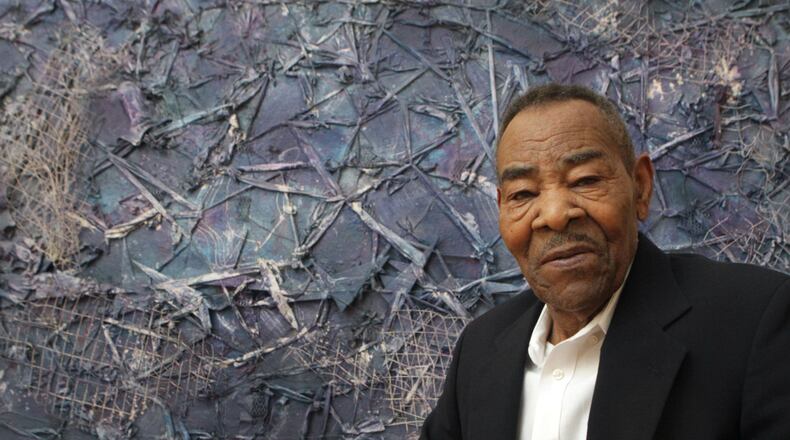The family of the late African-American artist Thornton Dial has charged in a new lawsuit that Dial’s artwork was wrongly acquired by the High Museum of Art.
Filed this week in federal court by Dial’s estate and three of his children, the lawsuit charges that art dealer William S. Arnett or his foundation Souls Grown Deep sold or donated Dial’s artwork to the High Museum that Arnett didn’t rightfully own.
The High already had the largest publicly exhibited collection of Dial's work when it announced earlier this year the acquisition of 13 more pieces by the Alabama artist. The Dial works were part of a group of 54 outsider artworks sold or donated to the High by the Souls Grown Deep Foundation, the organization created by Arnett and founded upon his extensive collection.
That acquisition included the monumental 14-foot-wide painting/assemblage “Crossing Waters,” a dark meditation on the trans-Atlantic slave trade and the largest painting Dial ever made.
But the lawsuit states that Arnett and Souls Grown Deep had Dial’s work in “consignment,” and had no right to donate or sell it. It reads: “Under the Art Act, as agents, Defendants held Crossing Waters, among other Art, in trust for the benefit of Mr. Dial (and Plaintiffs) and had no title or right to sell and/or donate Crossing Waters, among other Art, to the Souls Grown Deep Foundation and/or to The High Museum of Art.”
The lawsuit seeks unstated damages, including punitive damages and attorneys’ fees.
Maxwell Anderson, president of the Souls Grown Deep Foundation, said, in a statement, “Although the Souls Grown Deep Foundation is not a party to this lawsuit, we are working closely with the Dial family and our museum partners, and are confident that we will be able to resolve this matter expeditiously.”
Arnett’s lawyer, John Moye, of Kilpatrick Townsend, said a $2 million “art purchase agreement” signed by Arnett and Dial and Dial’s heirs in August, 2012, specified which artwork Arnett was purchasing -- generally art created before Jan. 1, 2011 -- and spelled out how that art could be sold.
“This is not a consignment,” said Moye. “It was an art purchase agreement, heavily negotiated by lawyers on both sides.”
Dial was the son of Alabama sharecroppers, and worked in welding, fabricating railroad cars. He also was a prolific creator of art objects, often from cast-off materials.
He met Arnett in 1987, and Arnett worked tirelessly to promote Dial's work, while acquiring an enormous collection of art by Dial and others. Dial became one of the most celebrated self-taught artists in the country, his art was collected by the High, the Metropolitan Museum of Art, exhibited at the Whitney Biennial and sold for hundreds of thousands of dollars.
Arnett has encountered trouble and controversy over his relationship with Dial, who died last year at age 87. He has also garnered praise for his role in promoting African-American artists, including Dial, Lonnie Holley and the quilters of Gee's Bend.
Arnett was on hand in 2012 when the High Museum staged a colossal retrospective of Dial's work called "Hard Truths."
About the Author
Keep Reading
The Latest
Featured



